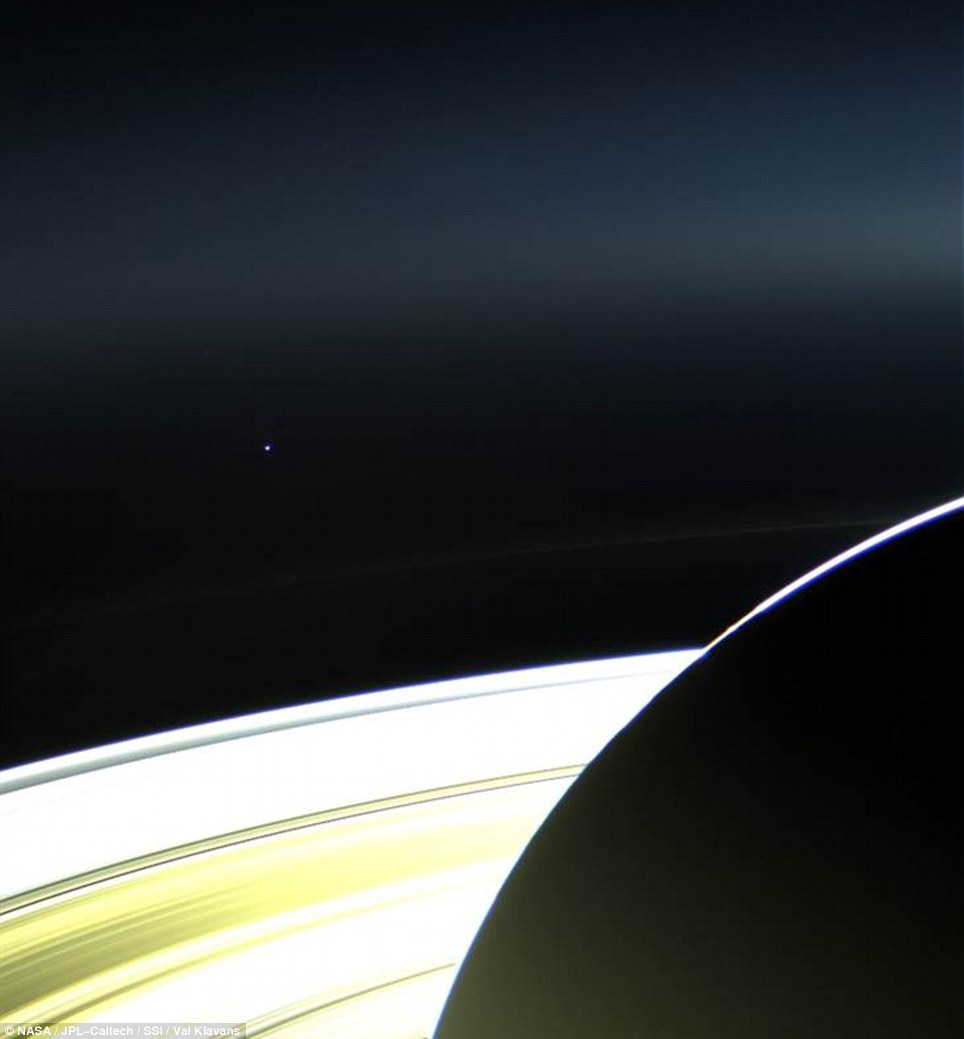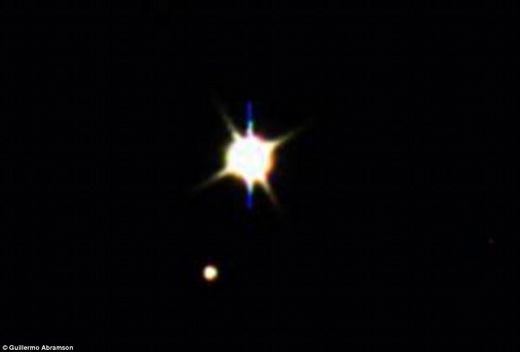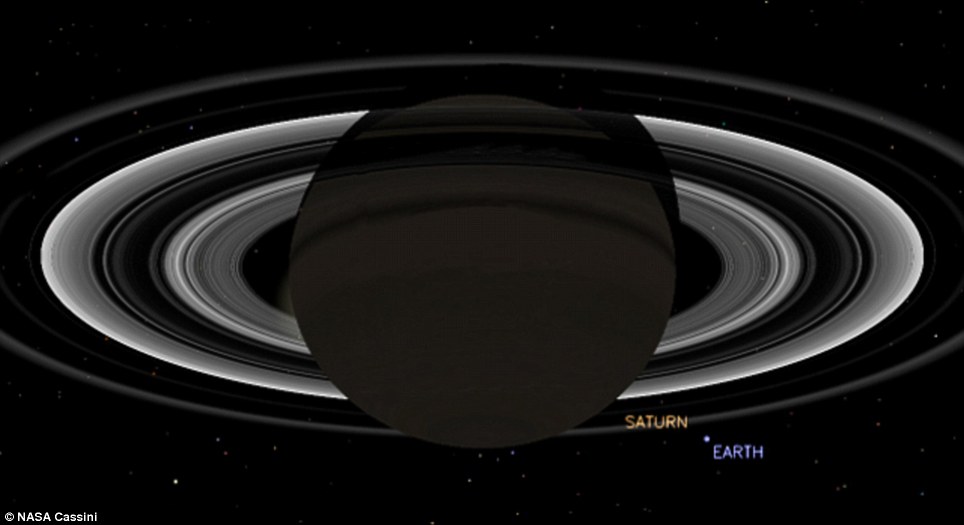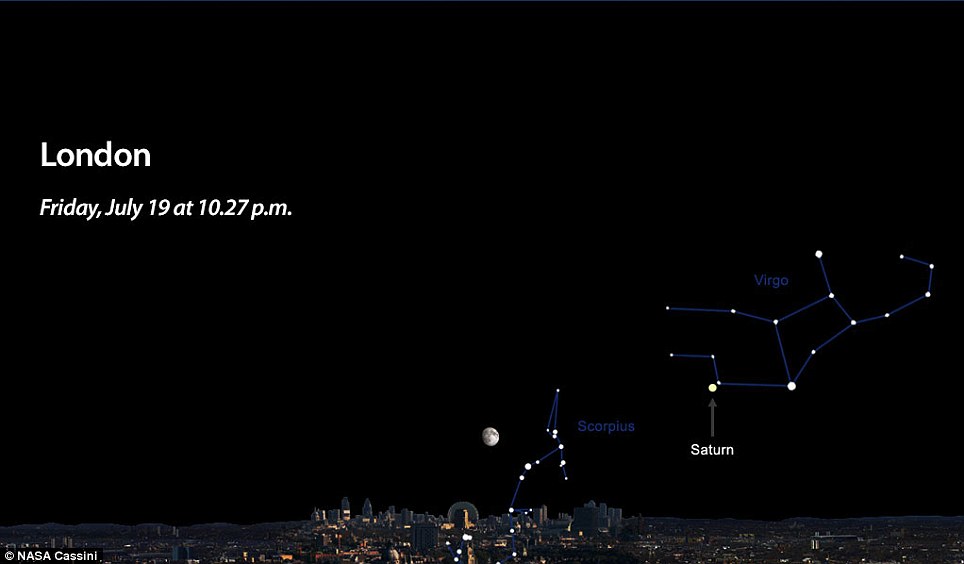
The picture was captured on July 19 by the probe's wide-angle camera from a distance of 900 million miles.
Magnifying the image five times reveals not only the Earth but also the moon, a fainter smudge to the right of the planet.

After the event, she tweeted: 'WASN'T IT FABULOUS?! I thought of all of you and all the people around the globe thinking the same thoughts I was. Felt SO connected to everyone.
The Earth has only been pictured in images from outer space on two other occasions. The first was in 1990, when Voyager 1 captured an image from 3.7 billion miles away. The second occasion was when Cassini took a photo in 2006 from 926 million miles away.
NASA took the image on July 19 because Saturn was backlit by the Sun and Earth was included in the picture.
Linda Spilker, Cassini spacecraft lead scientist at the Jet Propulsion Laboratory in Pasadena, California said: 'We can't see individual continents or people in this portrait of Earth, but this pale blue dot is a succinct summary of who we were on July 19.'
Cassini snapped the picture on Friday, the same day NASA's Mercury-orbiting MESSENGER probe imaged Earth as well.
In that picture, Earth and the moon take up less than a pixel, but appear large because they are overexposed.
'That images of our planet have been acquired on a single day from two distant solar system outposts reminds us of this nation's stunning technical accomplishments in planetary exploration,' said MESSENGER lead scientist Sean Solomon, with Columbia University in New York.
The raw images of Earth that arrived back home from Saturn on Saturday were raw and not easy for the average layman to decipher. The images showed both wide and narrow-angle views and different shots were taken with different color filters, additionally, Cassini moved slightly in between shots.
Usually, spacecraft in the far reaches of the solar system don't look back toward Earth to avoid damaging their instruments by direct sunlight. Last week, the sun was temporarily blocked relative to Cassini's line of sight, allowing the U.S. space agency to take the picture.
Val Klavans, an image processor and social-media leader for the 'In Saturn's Rings' film project, produced an unofficial color image composite of the raw data that was sent back.
Guillermo Abramson, a physicist at Argentina's Bariloche Atomic Center, tweeted a zoomed-in shot of Earth - as seen from nearly 900million miles away.
Thousands of Earthlings looked up at Saturn and waved at 2.30pm Pacific time on Friday to participate in the symbolic #DayEarthSmiled and #WaveatSaturn campaigns at the time Cassini was shooting the pictures.
Photos show staffers at NASA's Jet Propulsion Laboratory in Pasadena, California, participating. Costumed sci-fi fans at Comic Con in San Diego - including a few Storm Troopers from Star Wars - also posed for the pictures.
The main purpose of the photograph is to study any changes in Saturn's rings, after an 2006 image showed possible changes.
'A previous mosaic of the Saturn system Cassini made in 2006 revealed that the dusty E ring, which is fed by the water-ice plume of the moon Enceladus, had unexpectedly large variations in brightness and color around its orbit,' Cassini scientist Linda Spilker said.
'We'll want to see how that looks seven Earth years and a Saturnian season later, giving us clues to the forces at work in the Saturn system,' she said.





Reader Comments
to our Newsletter